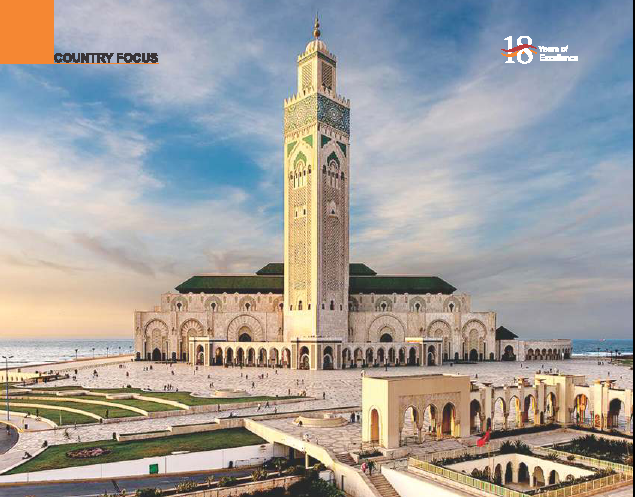The Moroccan Marvel
 Author: STC
Author: STC
Article Date: 01.04.2016
Morocco's ancient capital has often played second fiddle to Casablanca and Marrakech. However, cultural and architectural forces are driving it into the future. The road into Rabat looks like a runway to the future. We seem to float toward the city on a long straight approach lined with red, blue and yellow LED lamps through dark as black as outer space.
The new incarnation of the Moroccan capital will be coming soon, courtesy of massive investment from the UAE and elsewhere. There is already evidence of upgrades along the banks of the River Bou Regreg, which separates Rabat from its sister city Sale, barely 50 meters away across the shallow, salty water. Long since dammed and tamed, its tidal flow tightly controlled, the river has recently seen condos, cafes and waterfront promenades rise on both sides.
Where wooden boats and later road bridges prone to bottlenecked traffic - used to like the cities there is now the smooth, efficient Rabat - Sale tramway. Now the traditional merchant vessel Le Dhow is a ship shaped restaurant and bar.
This is the 21st century Morocco under King Mohammed VI, who advances the forward-looking agenda from the Royal Palace grounds in the middle of town. Along the main thoroughfare of Avenue Mohammed V, the post office, national bank and central train station have retained their pristine Art Deco facades. Occupying one full corner of a block is Le Grand Comptoir of 1930's vintage brasserie with original wood panels and a flowing staircase still fit for magnificent entrance.
Most of the foreign embassies are clustered in a quiet zone of high walls and lush gardens near the edge of town. The capital is sometimes dismissed as boring by comparison, but what that seems to mean is that it still exists more for local than tourists. A visitor can pass through the narrow streets and markets of the Rabat medina without being hassled or even really noticed.
The feeling persists across the road and into the Kasbah, an even older town-within-a-town that hangs above the ocean at the very north-west corner of the African continent. Hundreds of families live inside the 12th century citadel that once afforded residents the protection of its founder.
Nowadays the lookouts offer a panorama of surfers riding Atlantic waves, jet-skis zipping across the mouth of the Bou Regreg, the medieval graveyard at sale, the construction cranes raising the new City of Light, and the scaffolding around the Hassan Tower part of a mosque project begun by Yacoub in 1195 but left unfinished on his death four years later.
Nowhere in Rabat does power and conquest seem more ephemeral than at the "necropolis" of Chellah. Strolling through its ruins, graves and gardens is an experience. First the Phoenicians made their home here, then the Romans, and much later the Marinid Dynasty, who reused the Roman ruins to build a boarding school, mosque and burial site that lasted centuries. For a second, in the fading light and evening hush, it is almost possible to see and hear an ancient Phoenician resident standing right on this spot, lamenting the passage of time, the speed of change, and the way the young squander their youth.
The Arabic term "Hammam" is often translated to English as "Turkish Bath", leading many to believe that the Turks deserve all the credit for this time-honoured method of steaming up and scrubbing down. If we should be thanking anyone for the original idea, it is probably the ancient Romans, and the Greeks before them. The empires fell but their bathing practices survived, with different corners of the old world developing their own regional variations in Morocco, the hammam is a long standing tradition with a certain and specific etiquette.
Some modern hammams are principally designed for foreign bathers, especially those spa-style facilities inside the hotel. The first and most useful thing here is not to get completely undressed, trunks or underwear are required for the sake of modesty. The second is not to waste water. While hammam bathing is not originally or exclusively Islamic, the custom carries a certain reverence for that life-giving element.